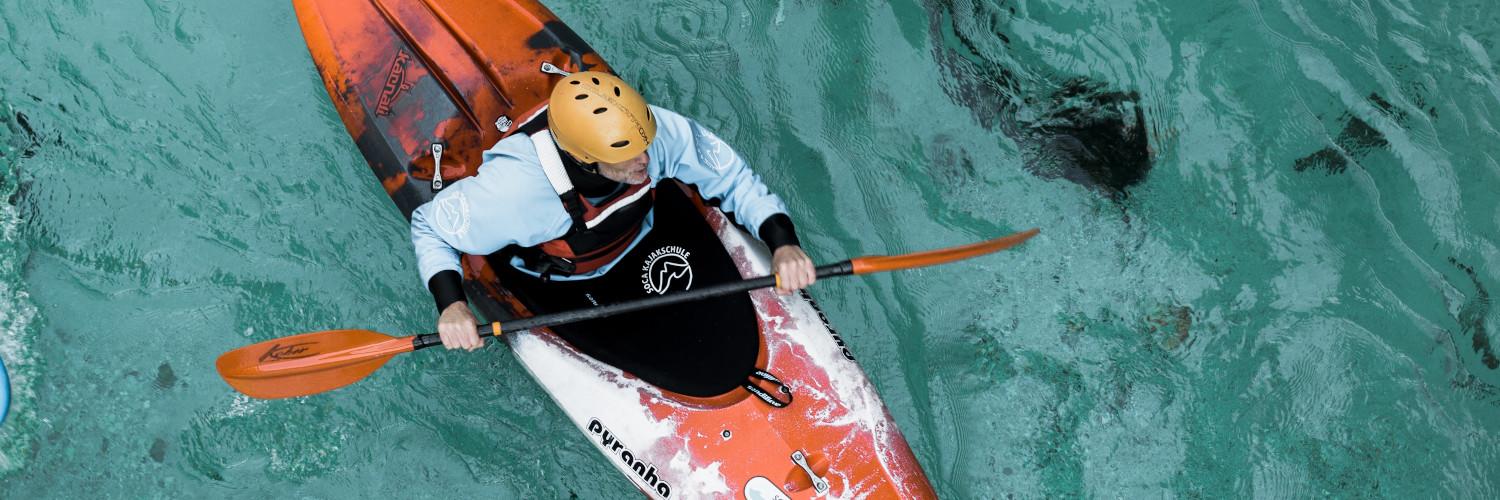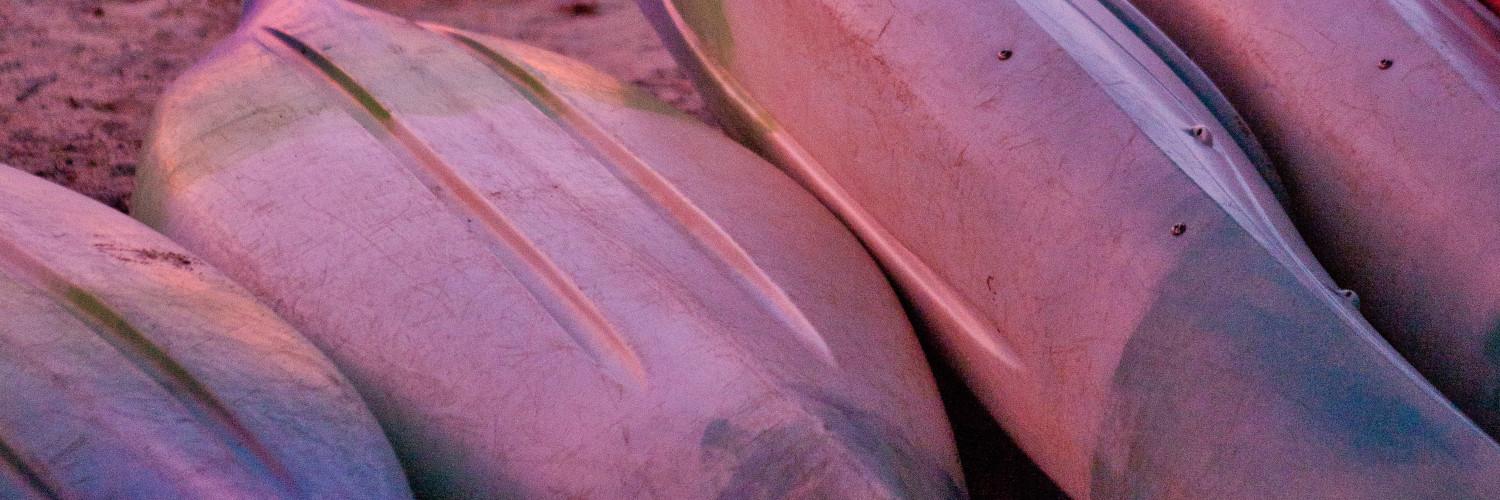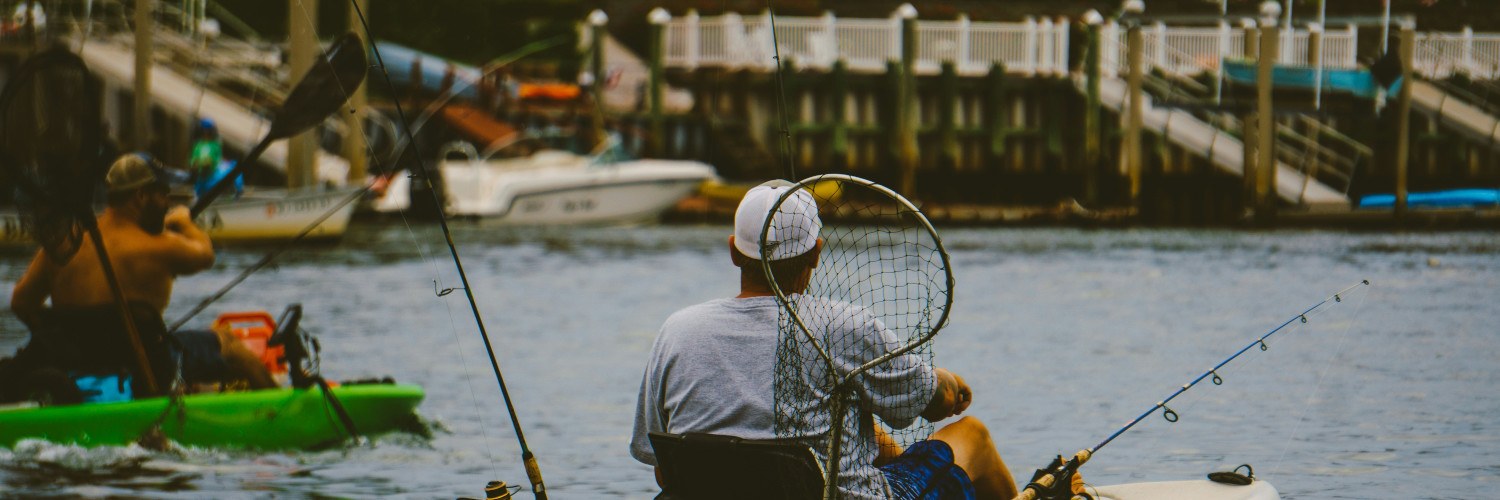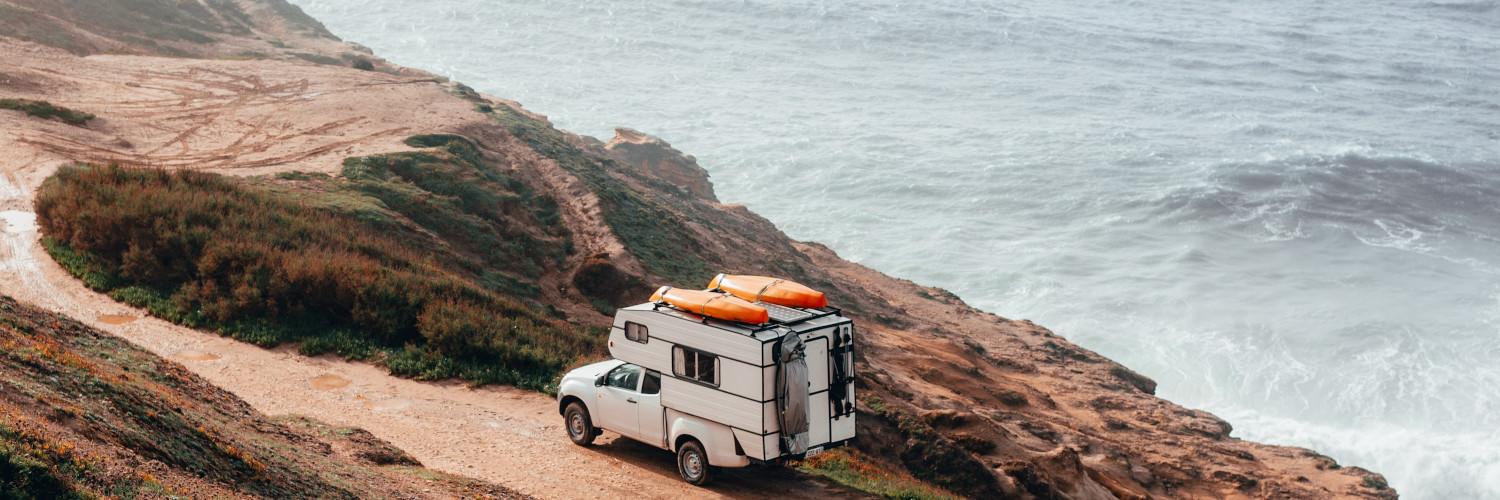There are a surprising number of parts on a kayak for such a simple vessel. There are 7 main components of a kayak: the bow, stern, kayak deck, kayak hull, cockpit, foot rests, and kayak seat.
The Parts of a Kayak
The Bow
First up on the list is the bow of your kayak. Very simply, the bow is the front portion of the kayak. While you’re out on the water, the orientation of your bow is your direction of travel. You can usually tell the bow from the stern quickly because it typically comes to more of a point. Different types of kayaks have differently bow designs and each serves a specific purpose. When you’re choosing which kayak to buy for either whitewater or touring, you’ll want to understand the differences between bows.
Bulkheads
Touring kayaks, which are the more extended variety, will often have what’s called a bulkhead. Bulkheads are located in the bow of the kayak, in front of where your feet rest. This is a walled-off, hollow portion of the kayak that allows you to store your belongings and gear to keep them from getting wet. It usually has a water-tight cover called a hatch that you can open and close.
The size of the bulkhead may vary depending on the size of the kayak. How much gear you’d like to carry in your kayak will help you determine the best location for the bulkhead.
The Stern
The back part of a kayak is called the stern. The rear part of any vessel is called the stern. From a small one-person kayak to a huge freighter or battleship, the back is the stern. The stern will usually be tapered to a point, similar to the bow, but it may be shorter than the bow. Like the bow, the stern may have a bulkhead inside of it to allow you to store even more gear and equipment safely.
The Rudder or Skeg
A rudder is stored on the top side of your kayak and is dropped into the water. It is controlled by foot pedals that allow you to steer it. It increases your stability and helps you navigate, especially in rough conditions. What is the purpose of a skeg on a kayak? A skeg on a kayak helps you track straight. A skeg is stored in a small compartment in the hull of your stern and drops down into the water when you want to use it. Unlike a rudder, it doesn’t turn, so it won’t help you steer, but it will help you stay on a straight course when it’s windy.
Kayak Deck
The deck of your kayak is the top portion that sits outside of the water. This may be the portion you sit on if you have a sit-on-top vs a sit-inside kayak. There are a lot of sub-components of the kayak deck, which we will further discuss below.
Bungees
Your kayak’s deck may come equipped with tie-down bungees, which will allow you to secure gear that you don’t mind getting wet. These may be on the bow, the stern, or both. You may attach things like a cooler, an extra paddle, or a water bottle.
Extra bungee cords typically come in either 4mm or 5mm thickness. Bungees give you a little more security if you’re attaching something bulky or heavy. Either way, make sure the bungees you purchase, if you’re replacing a set, are rated for marine use.
Handles
The handles of your kayak allow you to carry your kayak more easily. A kayak will typically have a handle on the bow and stern of the kayak. There are two basic types of kayak handles and they’re both made for carrying the kayak:
- Handles that are integrated or rotomolded-into the kayak’s deck
- Handles attached to the kayak with a lanyard/rope
Kayak Hull
The bottom half of your kayak is called the hull. The hull is the portion of the kayak that sits below the water. There are two types of kayak hulls: displacement and planning hulls.
Displacement hulls have a rounded shape and push or plow through the water. Most recreational kayaks have displacement hulls Kayaks while planning hulls have angled sides with flat bottoms. Planning hull kayaks are designed for higher speeds and they skim on top of the water. Most whitewater kayaks have planning hulls.
Cockpit
The large hole in a kayak where you sit is called the cockpit. There are two main cockpit designs that you should be aware of-keyhole cockpit and ocean cockpit. Each offers advantages and disadvantages. Keyhole cockpits are easier to get in and out of, while ocean cockpits keep water and waves out.
Footrests
Footrests are where you place your feet in a kayak. Foot rests can be found on most modern kayaks, but some kayaks don’t have them. Kayaks with foot rests either have adjustable foot rest pegs or multiple foot rest locations molded into the hull. Some foot rests also control the rudder.
Kayak seat
The kayak seat is the bench you sit on while riding the kayak. You want to pick a comfortable seat so your butt won’t get numb and your back will remain comfortable on long paddle trips. Look for seats with a good shape for your butt and good back support.





